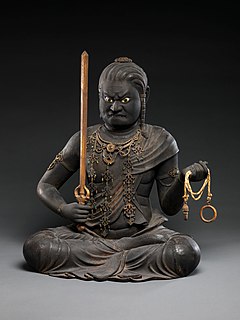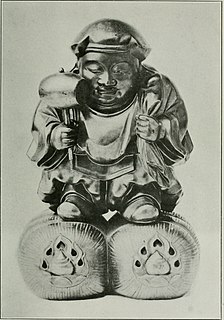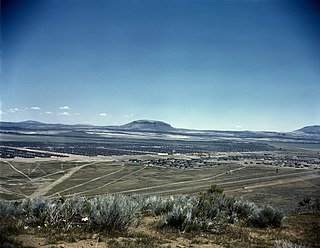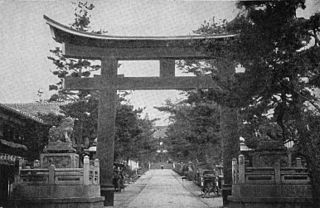
Nichiren Shōshū is a branch of Nichiren Buddhism based on the teachings of the 13th-century Japanese Buddhist priest Nichiren (1222–1282), claiming him as its founder through his senior disciple Nikko Shonin (1246–1333), the founder of Head Temple Taiseki-ji, near Mount Fuji. The lay adherents of the sect are called Hokkeko members. The Enichizan Myohoji Temple in Los Angeles, California serves as the temple headquarters within the United States.

Religion in Japan manifests primarily in Shinto and in Buddhism, the two main faiths, which Japanese people often practice simultaneously. According to estimates, as many as 80% of the populace follow Shinto rituals to some degree, worshiping ancestors and spirits at domestic altars and public shrines. An almost equally high number is reported as Buddhist. Syncretic combinations of both, known generally as shinbutsu-shūgō, are common; they represented Japan's dominant religious practice before the rise of State Shinto in the 19th century.

Shingon Buddhism is one of the major schools of Buddhism in Japan and one of the few surviving Vajrayana lineages in East Asia, originally spread from India to China through traveling monks such as Vajrabodhi and Amoghavajra.

Noriyuki "Pat" Morita was an American actor and comedian. He was known for his roles as Matsuo "Arnold" Takahashi on Happy Days, Mr. Miyagi in The Karate Kid film series, Captain Sam Pak on the sitcom M*A*S*H, Ah Chew in Sanford and Son, Mike Woo in The Mystery Files of Shelby Woo, and The Emperor of China in Mulan and Mulan II. He was the series lead actor in the television program Mr. T and Tina and in Ohara, a police-themed drama. The two shows made history for being among the few TV shows with an Asian American series lead.

Acala or Achala, also known as Acalanātha or Āryācalanātha, is a wrathful deity and dharmapala prominent in Vajrayana Buddhism and East Asian Buddhism.

Daikokuten is a syncretic Japanese deity of fortune and wealth. Daikokuten originated from Mahākāla, the Buddhist version of the Hindu deity Shiva, conflated with the native Shinto god Ōkuninushi.

Gohonzon is a generic term for a venerated religious object in Japanese Buddhism. It may take the form of a scroll or statuary.

The Tule Lake National Monument in Modoc and Siskiyou counties in California, consists primarily of the site of the Tule Lake War Relocation Center, one of ten concentration camps constructed in 1942 by the United States government to incarcerate Japanese Americans forcibly removed from their homes on the West Coast. They totaled nearly 120,000 people, more than two-thirds of whom were United States citizens.
Buddhist Churches of America is the United States branch of the Nishi Honganji subsect of Jōdo Shinshū Buddhism. Jōdo Shinshū is also popularly known as "Shin Buddhism". BCA is one of several overseas kyōdan ("districts") belonging to the Nishi ("Western") Honganji. The other kyōdan are Hawaiʻi, Jodo Shinshu Buddhist Temples of Canada, and South America.
George T. Tamura was a Japanese American artist.
The kuji-in also known as Nine Hand Seals is a system of mudras and associated mantras that consist of nine syllables. The mantras are referred to as kuji (九字), which literally translates as nine characters The syllables used in kuji are numerous, especially within Japanese esoteric Mikkyō.
Hiroshi Kashiwagi was a Nisei poet, playwright and actor. For his writing and performance work on stage he is considered an early pioneer of Asian American theatre.

Shinto, the folk religion of Japan, developed a diversity of schools and sects, outbranching from the original Ko-Shintō since Buddhism was introduced into Japan in the sixth century.

Our Lady of Manaoag is a Roman Catholic title of the Blessed Virgin Mary venerated in Manaoag, Pangasinan, the Philippines.
Gedatsu-kai, or Nirwana Association, is a Japanese new religious movement founded in 1929. The number of adherents exceeded 200,000 in the 1990s. It is a syncretic movement, with influences drawing from traditional Shinto and Shingon Buddhist teachings. Its central deity is Gochi Nyorai (Mahāvairocana). Gedatsu is the Japanese term for moksha or enlightenment. Gedatsu-kai is a non-sectarian study, having no firm affiliation with any existing religious groups.
Zen was introduced in the United States at the end of the 19th century by Japanese teachers who went to America to serve groups of Japanese immigrants and become acquainted with the American culture. After World War II, interest from non-Asian Americans grew rapidly. This resulted in the commencement of an indigenous American Zen tradition which also influences the larger western (Zen) world.









